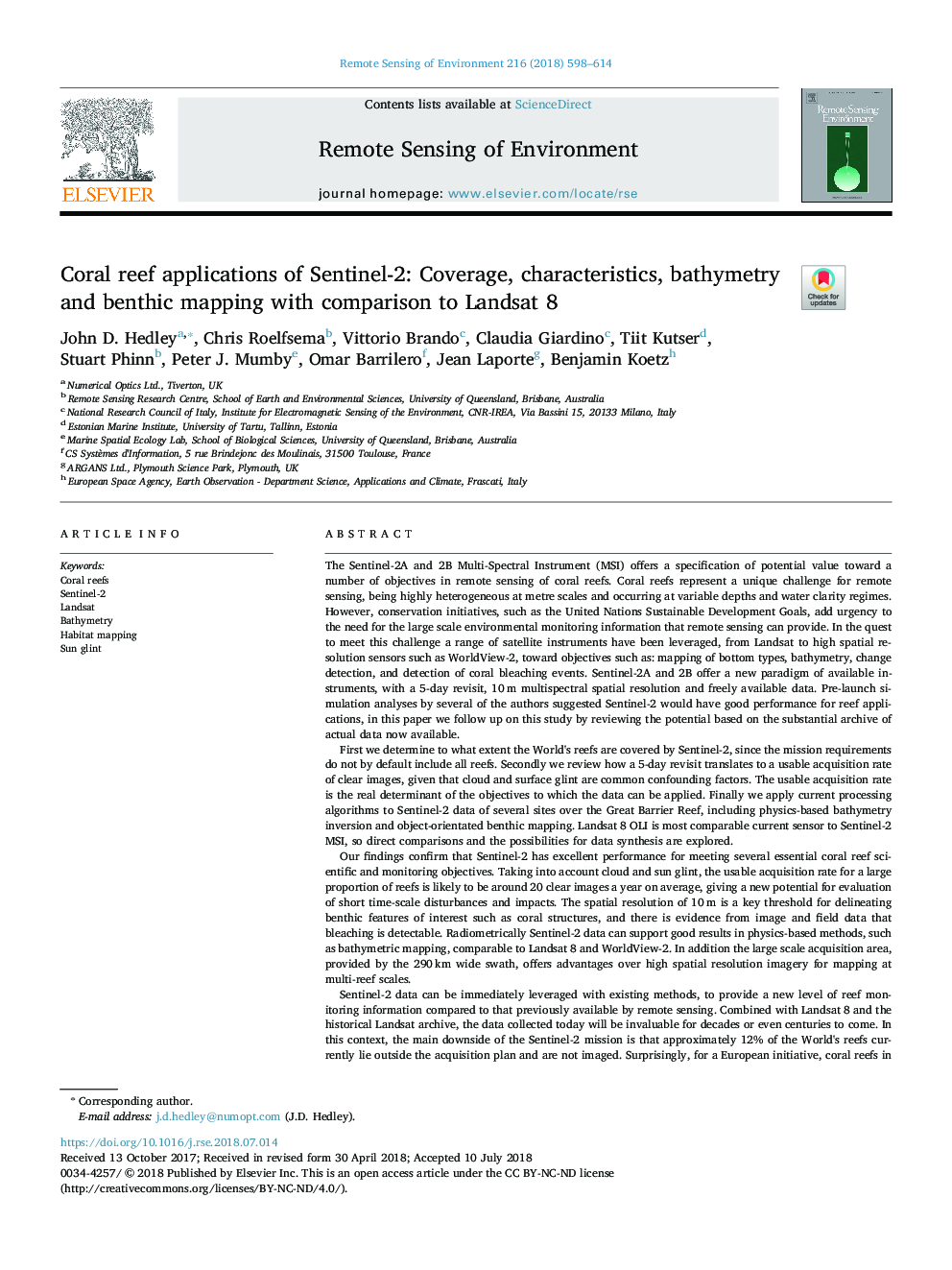| Article ID | Journal | Published Year | Pages | File Type |
|---|---|---|---|---|
| 8866439 | Remote Sensing of Environment | 2018 | 17 Pages |
Abstract
Sentinel-2 data can be immediately leveraged with existing methods, to provide a new level of reef monitoring information compared to that previously available by remote sensing. Combined with Landsat 8 and the historical Landsat archive, the data collected today will be invaluable for decades or even centuries to come. In this context, the main downside of the Sentinel-2 mission is that approximately 12% of the World's reefs currently lie outside the acquisition plan and are not imaged. Surprisingly, for a European initiative, coral reefs in European governed territories are among the worst served globally. These omissions, approximately only 1/200th of the currently imaged area, limit the global scope which otherwise would be one of Sentinel-2's greatest strengths.
Related Topics
Physical Sciences and Engineering
Earth and Planetary Sciences
Computers in Earth Sciences
Authors
John D. Hedley, Chris Roelfsema, Vittorio Brando, Claudia Giardino, Tiit Kutser, Stuart Phinn, Peter J. Mumby, Omar Barrilero, Jean Laporte, Benjamin Koetz,
